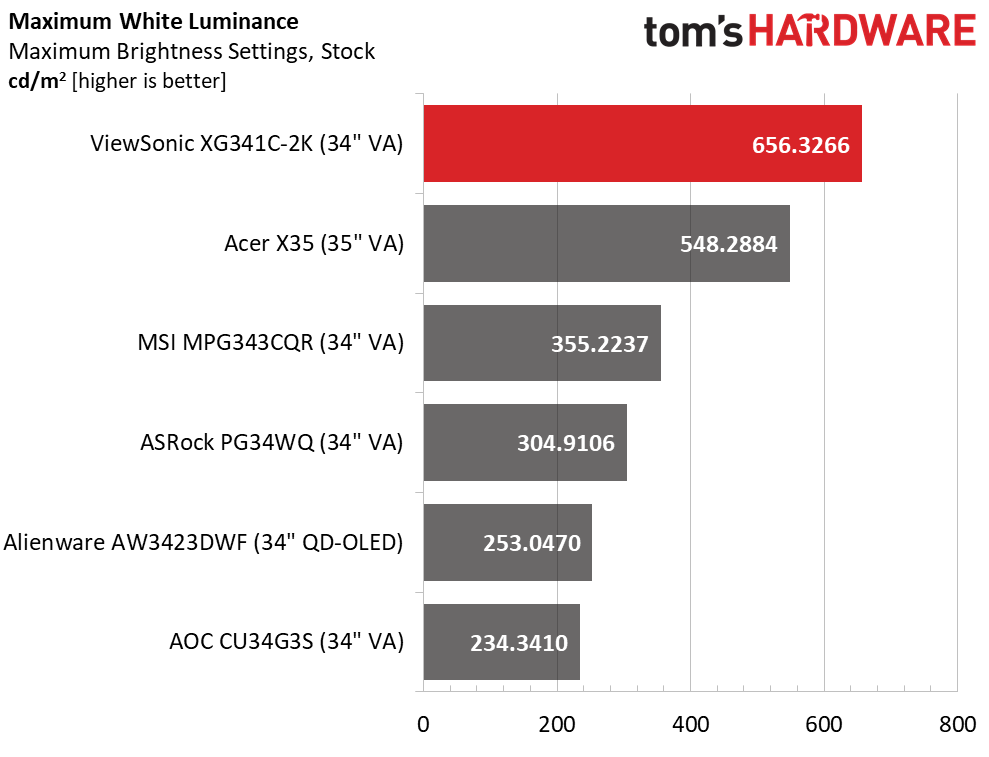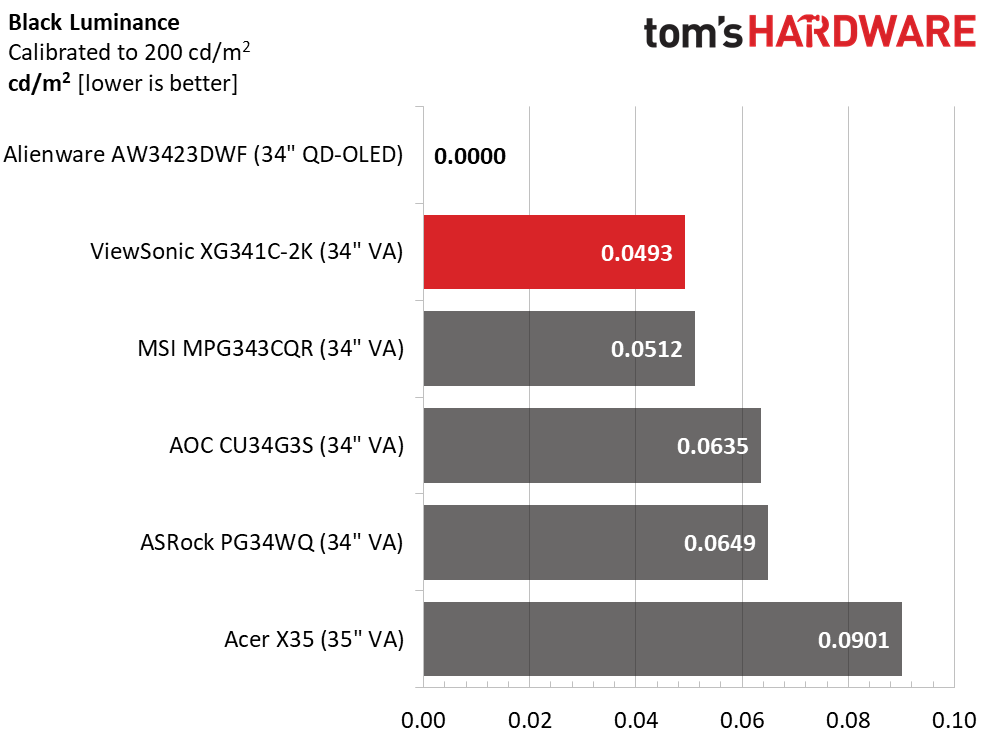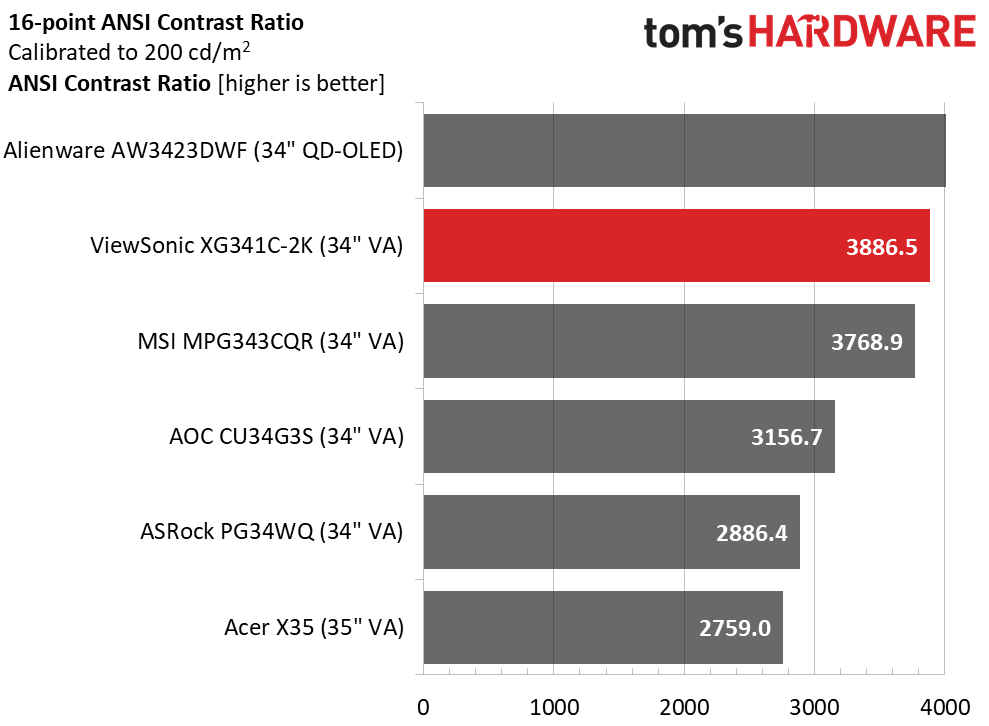Why you can trust Tom's Hardware
To read about our monitor tests in-depth, please check out Display Testing Explained: How We Test PC Monitors. We cover brightness and contrast testing on page two.
Uncalibrated – Maximum Backlight Level



The XG341C-2K boasts a very bright 656 nits peak at its default settings, which is too bright for any indoor setting. Fatigue will set in quickly at this level. The downside is that the minimum level is 72 nits which is a little hot for a darkened room. It also means each click of the brightness control changes the level by 4-6 nits, making it harder to find a precise setting.
With local dimming turned off, the black level is respectable and results in a native contrast ratio of 3,742.1:1, above average for a VA panel. If you engage the dimming, the black level can’t be measured, and contrast is infinite.
After Calibration to 200 nits



With peak white set to 200 nits, the XG341C-2K displays the deepest blacks of the VA panels in the group. A native contrast ratio of over 4,000:1 means you can see a very high-quality image without resorting to local dimming. If you engage it, the black level can’t be measured. And you’ll definitely want it on for HDR content.
ANSI contrast is much the same at almost 3,900:1. This is one of the better VA monitors I’ve tested. Even without a dimming feature, it would look better than most of its competition. With dimming on, ANSI contrast is infinite. The XG341C-2K is well-engineered and built with excellent quality control. Only the Alienware OLED monitor can claim picture quality this good.
MORE: Best Gaming Monitors
MORE: How We Test PC Monitors
Get Tom's Hardware's best news and in-depth reviews, straight to your inbox.
MORE: How to Buy a PC Monitor: A 2022 Guide
MORE: How to Choose the Best HDR Monitor
Current page: Brightness and Contrast
Prev Page Response, Input Lag, Viewing Angles and Uniformity Next Page Grayscale, Gamma and Color
Christian Eberle is a Contributing Editor for Tom's Hardware US. He's a veteran reviewer of A/V equipment, specializing in monitors. Christian began his obsession with tech when he built his first PC in 1991, a 286 running DOS 3.0 at a blazing 12MHz. In 2006, he undertook training from the Imaging Science Foundation in video calibration and testing and thus started a passion for precise imaging that persists to this day. He is also a professional musician with a degree from the New England Conservatory as a classical bassoonist which he used to good effect as a performer with the West Point Army Band from 1987 to 2013. He enjoys watching movies and listening to high-end audio in his custom-built home theater and can be seen riding trails near his home on a race-ready ICE VTX recumbent trike. Christian enjoys the endless summer in Florida where he lives with his wife and Chihuahua and plays with orchestras around the state.
-
cknobman Lots to like here but a couple of nit picks considering the high price.Reply
8 bit panel
Needs to be calibrated as its really poor from the factory
Quirks with adaptive sync
If this was priced at $999 it would be much more appealing.